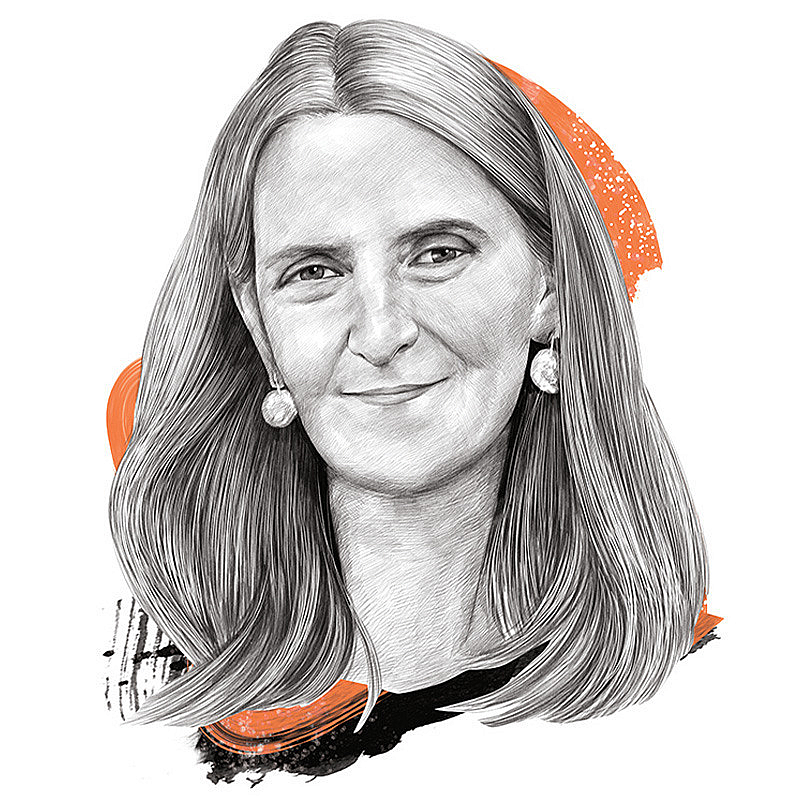More than our brains
Neuroscience and the Bible paint the same, complex picture of the soul
Full access isn’t far.
We can’t release more of our sound journalism without a subscription, but we can make it easy for you to come aboard.
Get started for as low as $3.99 per month.
Current WORLD subscribers can log in to access content. Just go to "SIGN IN" at the top right.
LET'S GOAlready a member? Sign in.
American physician Duncan MacDougall (1886-1920) is known as the man who tried to weigh the human soul. He balanced tuberculosis patients on scales in their final moments to see if anything lifted from them upon death. According to Dr. MacDougall, they were a whole 21 grams lighter, which he took to be the weight of the soul. His results were later discounted, but the view that underlies his efforts still lives on today: that belief in the soul or anything supernatural is outdated and has been explained away scientifically.
As Harvard psychologist professor Steven Pinker put it in How the Mind Works, the soul is in fact the brain: “The supposedly immaterial soul, we now know, can be bisected with a knife, altered by chemicals, started or stopped by electricity, and extinguished by a sharp blow or by insufficient oxygen.”
Is Pinker right? Has neuroscience eliminated the soul—the essence of who you really are? Not at all.
This is not a new conversation recently thrust into the spotlight with the rise of neuroscience over the last few decades. The existence and nature of the soul has been discussed and debated since the ancient world. Attempts to explain it away have existed from antiquity, alongside views in support of a nonphysical and supernatural dimension.
In fact, neuroscience itself suggests that we are more than just our brains. Consider survivors of childhood hydranencephaly—water on the brain—who are missing vast quantities of brain tissue and yet function as normal human beings. Or callosotomy patients, whose brain hemispheres have been surgically disconnected to minimize epileptic seizures, and yet splitting the brain doesn’t seem to cause splitting of the mind. Callosotomy is not without repercussions, but the person’s essential self remains intact.
Then there are thousands of accounts of near-death experiences (NDEs) from cardiac arrest survivors over the last 50 years, claiming that while their bodies were flatlining on the operating table, they themselves remained vividly conscious. In the phenomenon of terminal lucidity, some who have suffered brain injury, stroke, and advanced dementia have a dramatic and brief return to “their old self” shortly before they die. We saw something like this in my mother-in-law who on one occasion was able to pray and take part in a communion service despite having advanced dementia, confused speech, and no recollection of her children.
If we are just our brains, then as the brain irreversibly degenerates, the essential person slowly ebbs away. When the brain finally dies, that ought to be the end of consciousness. But that framework offers no hope for understanding NDE-ers or why a relative with irreversible brain degeneration is sitting up in bed and speaking normally. Could it be that we are really far more than just our brains? Could it be that a person’s neurobiology doesn’t drive who he really is? In states of disease, could it actually mask who he really is? Perhaps there is still room for the soul after all.
Biblical descriptions of human beings firmly support the complexity we see in neuroscience. The Platonic view of soul, the psyche, considered it the immaterial and immortal essence of a person that one day will escape its material confines to float off to some higher existence. However, the earlier Hebrew understanding of soul, or nephesh, is much more holistic: “Then the Lord God formed the man of dust from the ground and breathed into his nostrils the breath of life, and the man became a living creature [nephesh].”
Human beings are an amalgamation of “dust,” physical matter, and “breath,” life force or spirit, and the combination of the two is a living nephesh, a living soul or person. Here we see the same picture being painted in both neuroscience and the Bible. People are complex and multifaceted. They are an amalgamation of the material and the immaterial, the natural and the supernatural, the temporal and the eternal.
This is why there are some observations in the clinic that make no sense if humans are just brains on sticks. It is also why we see brain activity during religious practices such as prayer and meditation. Far from being a threat to spirituality or the reality of God, brain activity is exactly what we should expect from complex but integrated beings. When we move our discussions out of the lecture hall and into the clinic, we see that people are mysterious. The soul is mysterious. We need frameworks that help us make sense of the mystery rather than flatten it.
—Dr. Sharon Dirckx holds a Ph.D. in brain imaging from Cambridge University and is a speaker, former neuroscientist, and author of books including Am I Just My Brain?


Please wait while we load the latest comments...
Comments
Please register, subscribe, or log in to comment on this article.